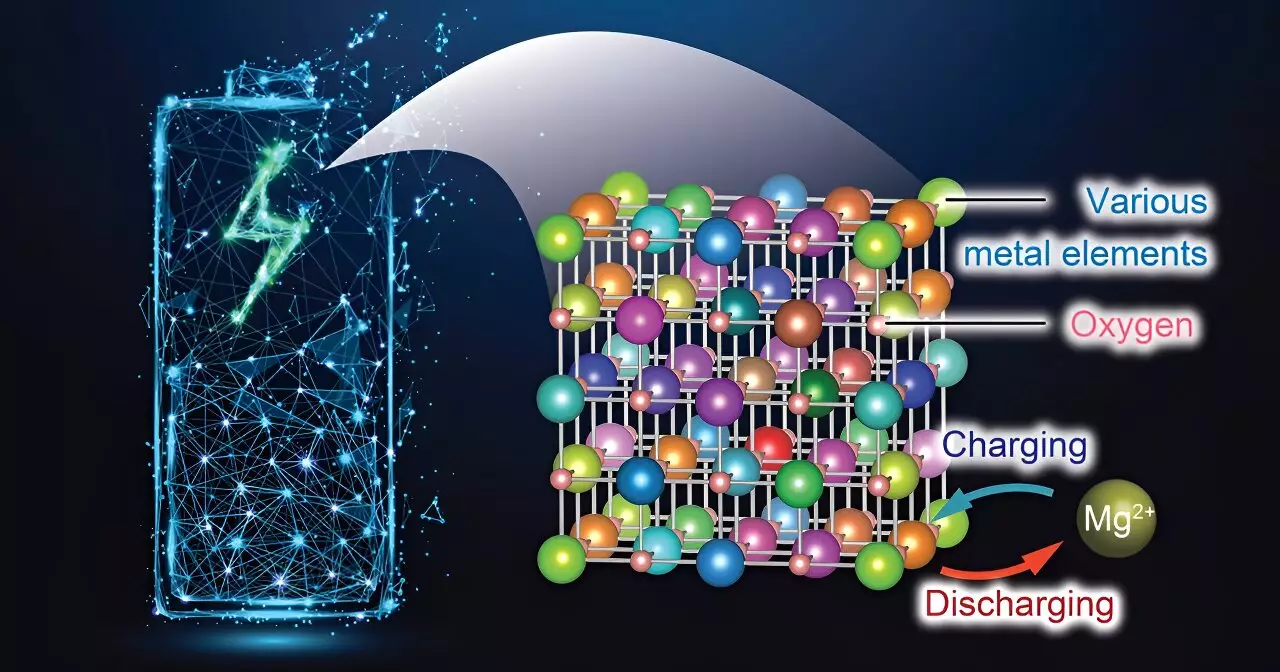In a groundbreaking development, researchers at Tohoku University have unlocked a new chapter in battery technology with the creation of a novel cathode material for rechargeable magnesium batteries (RMBs). This innovative material, based on an advanced rock-salt structure, has the potential to revolutionize energy storage solutions, making them more cost-effective, safer, and higher in capacity.
The study, recently published in the Journal of Materials Chemistry A, highlights a significant improvement in magnesium (Mg) diffusion within a rock-salt structure. This breakthrough is crucial as the previous configuration had hindered Mg migration due to the dense arrangement of atoms. By incorporating a strategic blend of seven different metallic elements, the researchers were able to create a crystal structure rich in stable cation vacancies, which facilitate easier Mg insertion and extraction. This marks the first time that rocksalt oxide has been utilized as a cathode material for RMBs. The high-entropy approach employed by the team activated the rocksalt oxide cathode by leveraging cation defects.
One of the key challenges with RMBs has been the difficulty of Mg transport within solid materials. Traditional cathode materials, such as those with a spinel structure, required high temperatures to enhance Mg mobility. However, the new material developed by Tohoku University operates efficiently at just 90°C, representing a significant reduction in the necessary operating temperature. This advancement addresses a critical limitation of RMBs and opens up new possibilities for their use in various applications.
Professor Tomoya Kawaguchi from Tohoku University’s Institute for Materials Research (IMR) emphasizes the broader implications of the study. He notes that while lithium is scarce and unevenly distributed, magnesium is widely available, making it a sustainable and cost-effective alternative for lithium-ion batteries. With the introduction of magnesium batteries featuring the newly developed cathode material, there is an opportunity for significant advancement in grid storage, electric vehicles, and portable electronic devices. This aligns with the global shift towards renewable energy and reduced carbon footprints.
Professor Tetsu Ichitsubo, also from IMR, highlights the significance of harnessing the intrinsic benefits of magnesium and overcoming previous material limitations. This research sets the stage for the next generation of batteries, with far-reaching impacts on technology, the environment, and society. Ultimately, this breakthrough represents a crucial step forward in the pursuit of efficient and sustainable energy storage solutions that can reshape the future of battery technology.


Leave a Reply